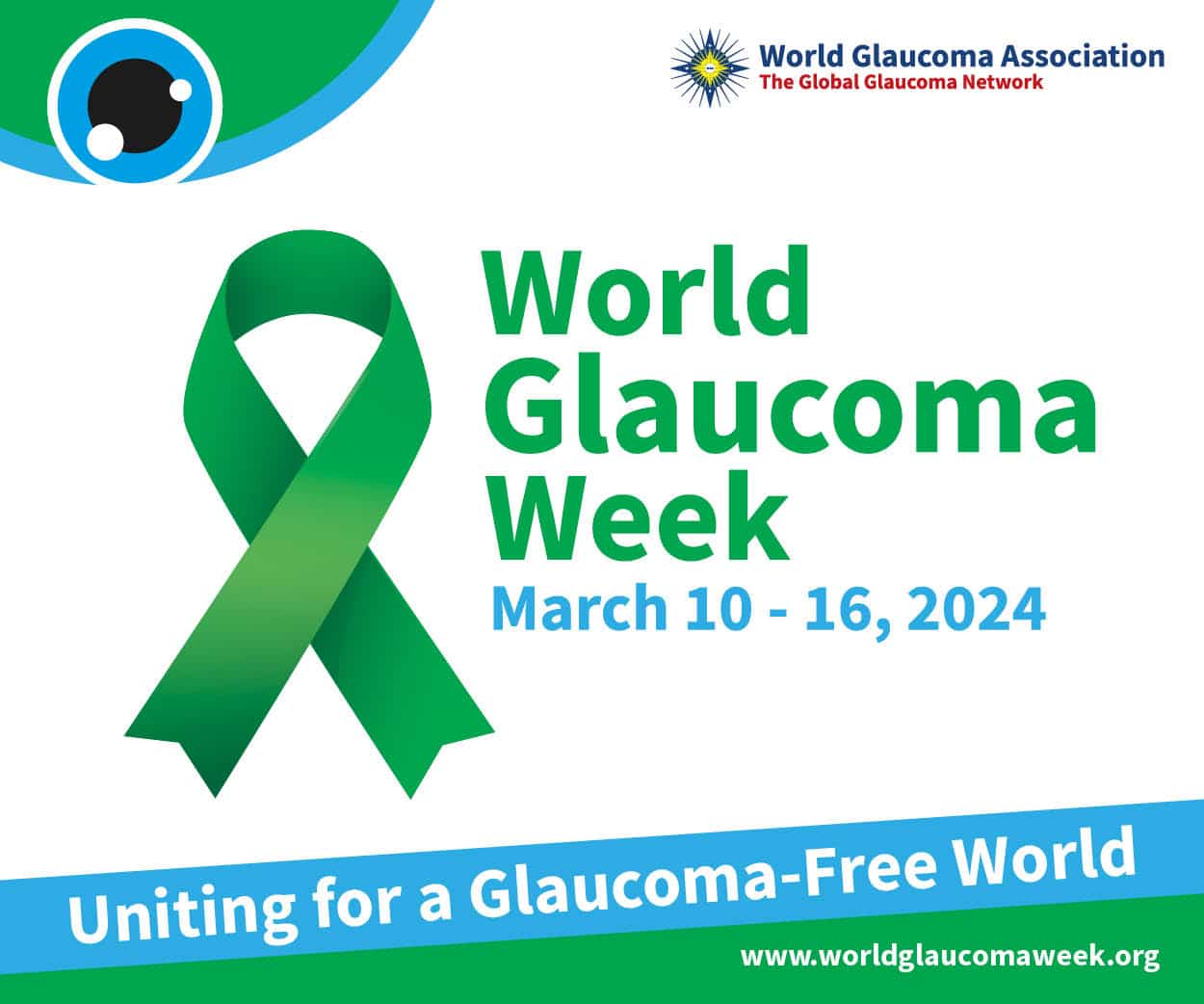
10 – 16 March is World Glaucoma Week. This year’s theme is, ‘Uniting for Glaucoma-Free World’. The World Glaucoma Association is calling on patience, health care providers, and organizations to join their initiative to spread awareness.
According to the World Glaucoma Association, Glaucoma is a leading cause of preventable blindness. This is one big reason why regular eye checks are so vital. Glaucoma isn’t always obvious. In some cases, people with Glaucoma don’t experience symptoms until irreversible vision loss occurs. The sooner it can be diagnosed the sooner you can receive treatments that can prevent vision loss and total blindness.
As someone who’s visually impaired and battles Glaucoma, sharing the following information and spreading awareness means a lot to me.
What is Glaucoma?
Glaucoma is not one particular eye condition. It’s actually the term for a group of eye diseases that damage the optic nerve. The optic nerve connects our eyes to our brain. It transmits visual information our eyes pick up, so that the brain can make sense of the images we see. If your optic nerve is damaged, you will experience vision problems and even total vision loss.
Types of Glaucoma
There are several types of Glaucoma, these are the most common ones.
Primary Glaucoma
Primary Open Angle Glaucoma (POAG) is the most common form in the United States. In simple terms, Open Angle Glaucoma prevents naturally occurring eye fluids draining at a normal rate. The channels for draining fluid from the front of the eyes are partially blocked. Fluid buildup causes high eye pressure that squeezes blood vessels, preventing proper blood flow to the optic nerve. The high eye pressure also presses on the optic nerve itself, causing damage.
Here are 5 facts about Primary Open Angle Glaucoma
- According to the National Eye Institute, In the US, 9 out of 10 people with Glaucoma have POAG.
- According to the NHS, ‘Both eyes are usually affected, although it may be worse in one eye.’
- It progresses slowly and in its early stage you may not experience any symptoms. If high eye pressure persists your peripheral (side) vision will be affected before your central vision. And because of this, you may not realise that you’re having vision problems.
- Age, ethnicity, and family history are all factors that could increase the risk of Open Angle Glaucoma onset.
- Eyedrops, laser, and surgical procedures are available treatments for managing high eye pressure and Open Angle Glaucoma.
There are also cases where fluid from the front of the eyes cannot drain properly because of Primary Angle Closure Glaucoma (PACG). With PACG, the shape and position of the eye blocks the opening to the drainage channel. This causes the same high eye pressure and damage to the optic nerve. PACG is rare, but age, gender, ethnicity, and family history are factors that may increase the risk.
Secondary Glaucoma
Unlike Primary Glaucoma, Secondary Glaucoma is caused by another eye disease or other medical conditions. The effects are the same, increased eye pressure that causes damage to the optic nerve.
Eye trauma, injury, surgery, and certain medications could cause Glaucoma. Medical conditions like diabetes, migraines, high blood pressure, sickle cell anemia could also cause Glaucoma.
Certain eye conditions or eye abnormalities could also cause Glaucoma. For example, in my case, our family has a congenital, genetic eye condition called Aniridia. This is where the iris is underdeveloped and causes other complications including Glaucoma. While there’s no cure for Aniridia, we undergo continuous monitoring and treatment for Glaucoma. This helps prevent further damage to the optic nerve, mitigating further vision loss.
Childhood Glaucoma
Babies and children can develop Glaucoma. This type of Glaucoma is rare. According to Glaucoma.uk, about 5 out of 100,000 are born with Glaucoma or develop it in childhood. It could be caused by eye developmental abnormalities or other medical conditions that cause high pressure or affect the optic nerve.
Other Symptoms of Glaucoma
- Hazy or blurred vision
- Eye sensitivity
- Severe eye pain
- Headaches
- Nausea and vomiting
- Appearance of rainbow coloured circles around bright light
What Can You Do on World Glaucoma Week
Check – Whether you have Glaucoma or not, make sure you are getting regular eye checks. This is the number one thing to do. Sight is precious. There is no cure for Glaucoma, but there are treatments and vision loss could be averted.
Share – Share this information. People who are older are at greater risk. It’s easy to forget to set up appointments when life is busy. But sharing information could encourage someone to take action.
Where to get more information
To learn more, you can visit the website sources for this article:
World Glaucoma Week
https://www.worldglaucomaweek.org/
World Glaucoma Association
National Eye Institute
Glaucoma UK
NHS

